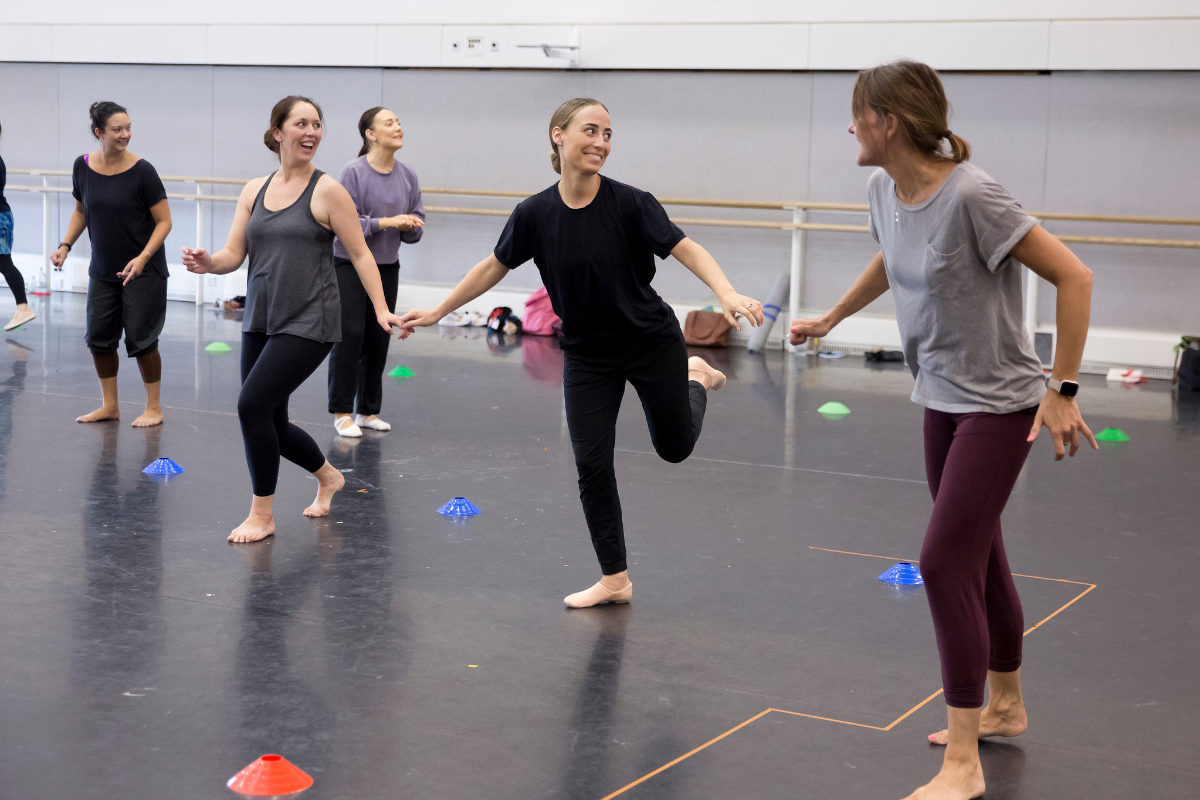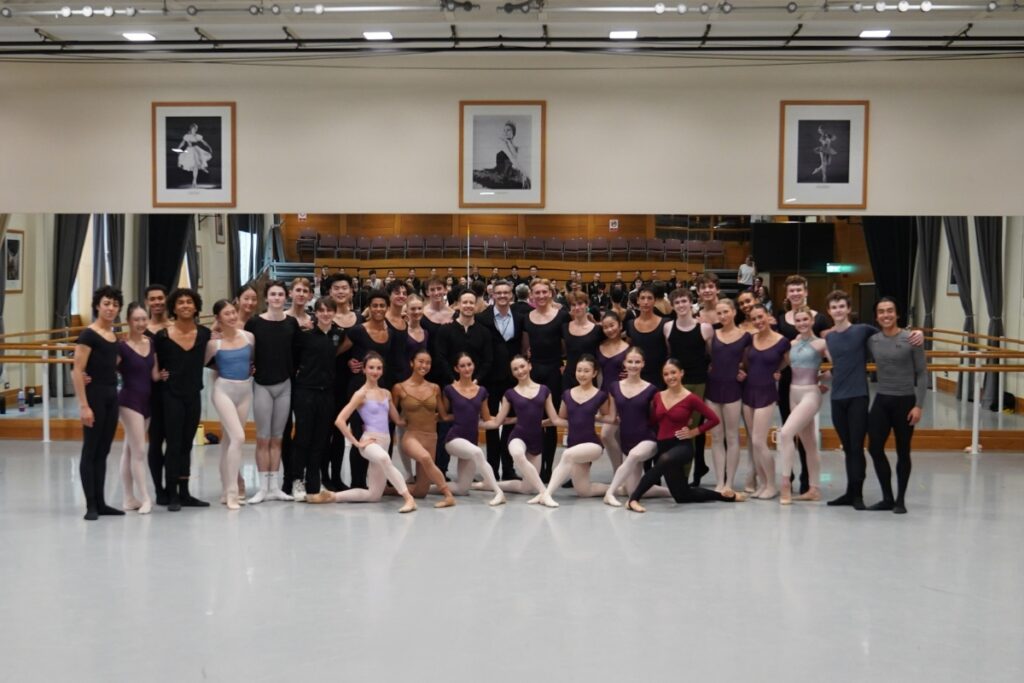Why become an Affiliate teacher? Q&A with Affiliate Programme Managers Vanessa Donkin and Shaun Walters
Last month we celebrated two years of the School’s Affiliate Training and Assessment Programme (ATAP). Since the programme’s inception, 46 teachers have successfully gained Affiliate status, and a further 29 are currently in training to deliver our revolutionary programme.
These teachers come from 12 countries spanning Europe, Australia, and Canada. They teach our programme in their dance schools and conduct assessments, which The Royal Ballet School moderates.
We asked Affiliate Programme Managers Vanessa Donkin and Shaun Walters some burning questions as applications are currently open for our next stellar cohort of Affiliate teachers.


Can you tell me about your background?
Vanessa: I am an alumna of The Royal Ballet School and after my professional career, I qualified as a teacher with the Royal Academy of Dance. I taught extensively worldwide before setting up my own school 20 years ago.
I teach in the ATAP style, and my values align greatly with the programme. When Karen Berry and Mark Annear approached me to trial, help launch and then later manage the programme, I jumped at the chance as it was very much in keeping with what I was already advocating at my school. I have always adopted a creative approach and incorporated the appreciation of the art form into my classes as it is so important and enriching for students of all levels and abilities to understand (and enjoy) the bigger picture!
Shaun: I joined The Royal Ballet School’s Diploma of Dance Teaching (DDT) course in 2018, and during that time, I was asked to begin teaching on the Associate programme. By the end of the course, I had my own online Associate classes, and since graduating two years ago, Karen Berry asked me to take a managerial role with the Affiliate programme alongside Vanessa. I’ve gone through the ecosystem of the School, from training as a teacher myself to now training teachers.

How does the Affiliate programme differ from other syllabi?
Vanessa: Its unique aspect is that it offers diversity in content. There’s no set syllabus, and the programme has four key areas: ballet vocabulary, repertoire, creative practice and body awareness and conditioning. Other organisations may offer these, but they do so as separate entities (through workshops, CPD, an alternative course of study, etc). With ATAP, they’re embedded in the learning and assessment process at every level.
Shaun: ATAP offers a different approach and method to the education of dancers, which takes a broader approach to training and assessment. A key element of the programme is process over product. Exams tend to be product-focused solely. ATAP balances that out; our primary focus is on the process so students can also learn to love learning.
Vanessa: The focus is on the pedagogy, how you teach, not so much what you teach. The content is presented as an extensive selection of ingredients – it is up to the individual teacher as to how they utilise and combine these ingredients – driven by the needs of their students. We only give our teachers the vocabulary they’re requested to show at the assessment ten weeks before, so they can’t rehearse all year.
Shaun: The aim in training and assessing the four key learning areas is to study the subject with a breadth and depth approach, which we hope will allow each child to thrive. Teachers have said they’ve seen such a difference in some of their students who have loved the opportunity to create and study repertoire within their classes and who otherwise might have dropped out or not seen ballet as something for them.
Can the programme work alongside your current dance organisation or governing body?
Vanessa: Absolutely, it can actually complement what you are currently doing. ATAP is a versatile training methodology that can be applied to any syllabus. I personally use it alongside RAD, and I know many others who do, too.

Do you have any examples of teachers training their students in multiple syllabi?
Vanessa: Some Affiliate teachers have separate classes, RAD or other organisation syllabus classes, and ATAP classes. Other teachers may teach in the ATAP style across the board but then hold additional syllabus classes for children who want to undertake specific exams.
Shaun: We have also seen teachers have a group of students that learn ATAP, and then over the course of study, their students will also take an RAD exam or an ISTD exam, and then their ATAP assessment at the end of that journey. The idea is that the teaching methods and pedagogy apply to any teaching or learning, and ATAP complements and enhances the student experience.
What are the membership benefits for teachers?
Vanessa: There are so many benefits for teachers as well as students. CPD is implicit within the programme, and teachers attend three annual professional development sessions. ATAP students can also participate in ongoing in-person and online enrichment workshops led by dancers, teachers and ATAP tutors thanks to our direct link with The Royal Ballet Companies.
Shaun: Affiliate teachers have access to an immense online library of resources, marketing tools, discounts for teachers on other training courses and merchandise, and access to Royal Ballet School and Royal Ballet events and performances.
Vanessa: We have also recognised the importance of community with our ATAP teachers. Being a teacher is often quite isolating. Having a network to share ideas and support each other is invaluable. For the wider Affiliate cohorts, there’s a Facebook page, and we also run clinics now on specific subjects where everyone can drop in and meet each other.
Shaun: Since Vanessa and I have been working together, our top priority has been caring for the teachers. We do everything we can to ensure that our teachers are confident and comfortable with the work that is required of them, and they always have a point of contact and open communication channels with us.

What might surprise people about the Affiliate Programme?
Vanessa: We get a lot of people who enter into the world of The Royal Ballet School, and they think it’s going to be a certain way, and they’re quite surprised by how open and approachable the programme is. It is very inclusive, and their preconceptions of being part of The Royal Ballet School are completely different from reality.
Shaun: Teachers are always surprised at how much fun the training intensive is and are often amazed that they’ve forgotten what it feels like to dance. We give them daily classes during the intensive, and sometimes our teachers are worried about taking class again, but they love it. It reminds them of why they’re teaching dance and what it feels like to be a student and to dance.


What do you love about the Affiliate Programme?
Vanessa: I love the creativity of it. It’s not all about the assessments, but it is like putting on a production; you get this material and can orchestrate it how you want to make it work for your students. Also, you are encouraged to spend time on foundation skills to get them right to ensure incorrect neurological pathways are not set.
I’m passionate about the whole art form and the programme’s connection with the repertoire, but I love teaching it, and it’s so rewarding. I see it in my students going off to see things; they’re much more informed and enthusiastic. Irrespective of what they’re doing in my class, it has opened a gateway into another world they can enjoy.
Shaun: I’ve trained with the School from teacher training onwards, but despite that being my first experience, I’ve always aspired to The Royal Ballet School, and I find one of the best parts is that we now extend that to other people. It’s not just a case of opening the doors; it extends all of the great elements of teacher and dancer training that our full-time students receive here, allowing others to benefit from it.
Applications to train as an Affiliate teacher are now open and will close on 18 April 2024. Apply now.





